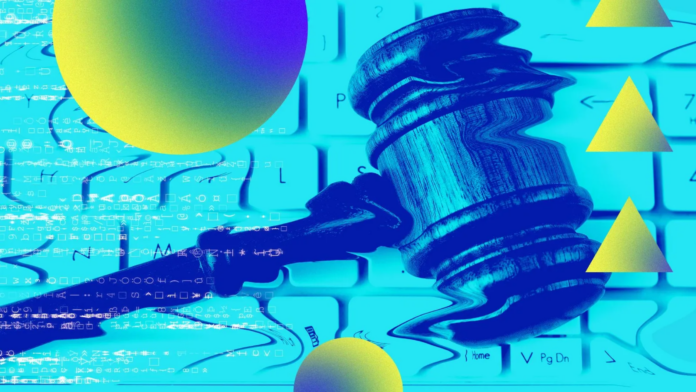Many artists are currently demanding fair compensation from generative AI companies whose work is trained on their creations. These artists argue that their artistic efforts and intellectual property are being used without proper authorization or compensation. The issue of compensation has become a significant concern for creators as they seek recognition and remuneration for their work in the rapidly advancing field of generative AI.
Artists filing lawsuits against generative AI vendors
To address the lack of compensation, artists have taken legal action against generative AI vendors. Lawsuits have been filed against companies such as Stability AI, MidJourney, and even industry giant Microsoft. These lawsuits accuse the vendors of copyright infringement and misuse of artists’ original creations. Artists feel that their work is being exploited for profit without their consent, leading to a loss of control over their art and potential missed earnings.
Specific companies facing lawsuits
Several generative AI vendors have found themselves on the receiving end of lawsuits from artists. Stability AI, a company that uses generative AI to create visual content, has faced legal action due to allegations of copyright infringement and unauthorized use of artists’ work. Similarly, MidJourney, known for using generative AI to create music, has also been targeted by artists seeking redress for the unauthorized use and manipulation of their musical compositions. Microsoft, as a major player in the technology industry, has also faced legal challenges related to its AI technologies.
Copyright Infringement and Misuse Claims
Artists accusing generative AI companies of copyright infringement and misuse
Artists accusing generative AI companies of copyright infringement and misuse believe that their original works are being used without their permission or proper licensing. These artists argue that generative AI models are trained on their creations, resulting in outputs that bear striking similarities to their original works. Such replication without authorization raises concerns of intellectual property rights and fair compensation for artists.
The need for proper authorization and compensation
The key issue at the heart of the copyright infringement and misuse claims against generative AI companies is the need for proper authorization and fair compensation. Artists contend that their creations are valuable and should not be exploited without their consent. They advocate for a system that respects intellectual property rights and ensures that artists are appropriately compensated for their work, even when it is utilized within generative AI models.
Artists’ Demands for Compensation
Open letter from the Authors Guild and thousands of writers
The Authors Guild, a prominent organization representing writers, has joined thousands of writers in signing an open letter to generative AI companies. This letter urges these companies to refrain from using authors’ works without proper authorization or compensation. This concerted effort by writers highlights the growing discontent among artists who are striving for recognition and remuneration for their contributions to generative AI.
Artists demanding fair compensation
Artists across various creative mediums are collectively demanding fair compensation for their work. They argue that their contributions serve as valuable training data for generative AI models, resulting in the creation of new content with commercial value. Therefore, they believe that they should receive their share of the profits generated from their original creations.
Lack of clarity on compensation policies
One significant challenge artists face is the lack of clarity regarding compensation policies from generative AI companies. Many artists find it difficult to navigate these policies and understand how they will be compensated for their work. There is a pressing need for transparent and well-defined compensation policies to ensure that artists receive the recognition and financial compensation they deserve.
Establishment of Creators’ Funds
Vendors pledging to establish creators’ funds
To address the concerns raised by artists, some generative AI vendors have pledged to establish “creators’ funds” or similar initiatives. These funds aim to provide monetary compensation to artists, authors, and musicians whose original works have been utilized in generative AI models. The establishment of these funds indicates a recognition by vendors of the need to address the issue of fair compensation.
Unclear amount creators can expect to make from these funds
While the creation of creators’ funds is a positive step, the exact amount that creators can expect to earn from these funds remains unclear. Artists are in dire need of transparency and assurance that their contributions will be adequately valued and rewarded. Without clarity on the financial benefits artists can anticipate, concerns about the effectiveness and fairness of these funds persist.
Promises and lack of transparency
Although vendors have made promises to establish creators’ funds, there is a noticeable lack of transparency regarding the operation and distribution of those funds. Artists require detailed information on how revenue will be generated, calculated, and divided among contributors. Without this necessary transparency, doubts regarding the true intent and effectiveness of these initiatives persist.
Companies Encouraging Creator Profit-Sharing
Adobe, Getty Images, Stability AI, and YouTube introducing profit-sharing initiatives
With the growing demand for fair compensation, companies such as Adobe, Getty Images, Stability AI, and YouTube have introduced or promised initiatives that allow creators to share in generative AI profits. These initiatives aim to provide artists with a portion of the revenue generated from their works incorporated into generative AI models. Companies recognize the importance of acknowledging artists’ contributions and aim to bridge the gap between creators and profit-sharing in the generative AI industry.
Lack of detailed information on earnings for creators
While the introduction of profit-sharing initiatives is a welcome development, the lack of detailed information on how much creators can expect to earn remains a concern. Artists require a clear understanding of the financial benefits they will receive for their contributions. Without specifics, it becomes challenging for artists to assess the true value and potential impact of these profit-sharing initiatives.
Compensation policies remain vague
Despite companies’ efforts to introduce profit-sharing initiatives, compensation policies in the generative AI industry remain vague and inconsistently defined. Artists struggle to navigate these policies, understanding the parameters for compensation and how it relates to the utilization of their works. The lack of clear policies perpetuates uncertainty and raises questions about the commitment of these companies to fairly compensate artists.
Compensation Policies and Lack of Clarity
Difficulty in deciphering compensation policies
Compensation policies implemented by generative AI vendors often prove challenging for artists to decipher. The intricate language and technical jargon used can confuse even those well-versed in the industry. Artists are left trying to navigate complex agreements and contracts without proper guidance or a clear understanding of how their compensation is determined.
Vendors failing to provide clear information on earnings
Many generative AI vendors have fallen short in providing artists with clear information on their potential earnings. Artists find themselves unable to plan or make informed decisions based on vague promises or incomplete information. To bridge this gap, vendors must prioritize providing transparent, comprehensive details about compensation structures and earnings potential.
Uncertain benefit for artists opting-in to model training
Artists often face uncertainty regarding the benefits of opting-in to model training offered by generative AI vendors. The potential returns and rewards for allowing their creations to be used in training data are often not clearly communicated. Without understanding the value they stand to gain, artists hesitate to offer their works and contributions to these models, further contributing to the divide between artists and the generative AI industry.
Promises of Future Riches
Vendors’ hazy promises of future riches
Many generative AI vendors make grand promises of future riches to artists who participate in the training of their models. However, these promises often lack substantive details and fail to provide artists with a clear understanding of what they stand to gain. The allure of potential wealth is overshadowed by the lack of concrete information, leaving artists skeptical of the true benefits they will receive.
Lack of compelling case for artists to opt-in to generative AI
With the absence of a compelling case, artists are left questioning the benefits of participating in generative AI initiatives. Vendors’ inability to clearly communicate the advantages and concrete opportunities for artists raises doubts about the motivations and intentions behind their offerings. Artists require a well-founded rationale supported by transparent information and fair compensation to consider participating in the generative AI landscape.
In conclusion, the issue of fair compensation for artists involved in generative AI remains a pressing concern. Artists are demanding proper authorization, recognition, and financial remuneration for the use of their original works in generative AI models. While some vendors have pledged to establish creators’ funds and profit-sharing initiatives, there is a lack of transparency and clarity surrounding these efforts. Compensation policies and the promises of future riches need to be defined and communicated in a manner that leaves no room for doubt or ambiguity. By addressing these concerns, generative AI companies can foster a more equitable and mutually beneficial relationship with the artists shaping their creations.












